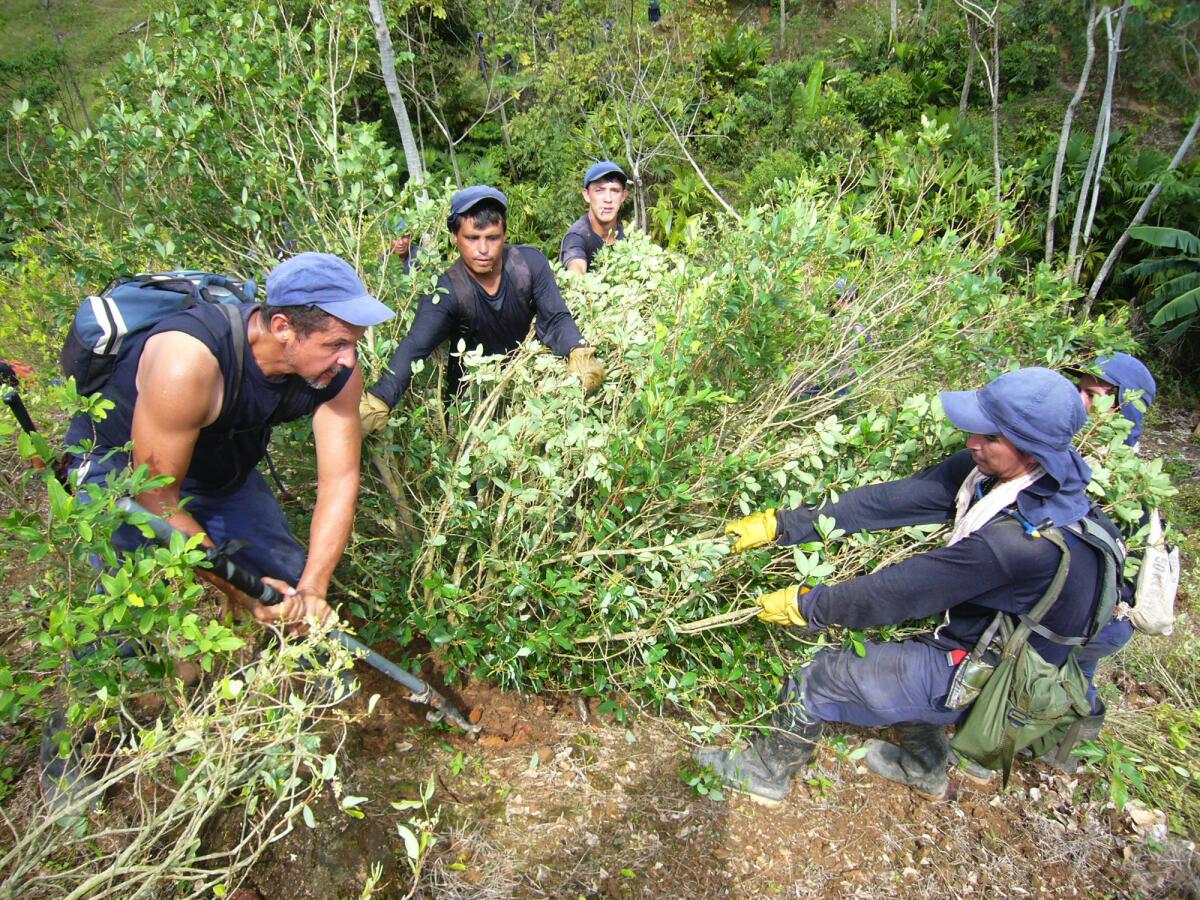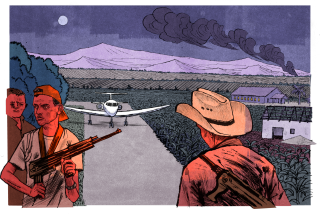Coca farming in Colombia dropped 25% last year, U.N. says

BOGOTA, Colombia -- Aggressive eradication programs and better alternatives for poor farmers are being credited with reducing the acreage under coca cultivation in Colombia by 25% last year.
The total area of coca, the base material for cocaine, was estimated at 120,000 acres, down from 160,000 in 2011, according to the annual survey by the United Nations Office on Drugs and Crime released Thursday. The U.N. uses satellite imagery and “field verification” to arrive at its estimates.
The amount of cocaine produced in Colombia last year was estimated at about 340 tons, comparable to the figure in 2011. That was the year when Colombia lost the dubious crown of being the world’s largest cocaine producer to Peru. The agency has not yet released 2012 coca or cocaine production figures for Peru.
Colombian authorities eradicated 327,000 acres of coca plants last year, about a quarter of which were done manually by teams of workers who uproot coca bushes, Thursday’s report said. Much of the aerial eradication program, which uses the industrial equivalent of the weed-killer Round-Up, is financed by the U.S. government and uses planes flown by American pilots.
The average wholesale price of a kilo of cocaine sold to traffickers in Colombia last year was about $2,500, about the same as the previous three years, the report said. That is a tenth of the price paid by drug dealers in Miami or Atlanta for Colombian cocaine, drug enforcement officials have said.
In its report, the U.N. said that programs promoting alternative crops are working for farmers, who often have few options to make a living. Last year, 60% of the farmers polled by field workers said coca was their only viable cash crop, while in 2005 the response was 82%. Among the alternatives being tried in Colombia are plantains, yucca and papaya.
The two provinces with the highest levels of coca production were the southern border states of Narino and Putumayo, a sign of how drug traffickers are increasingly using Ecuador as a transit hub. Ecuador remains a relatively tiny producer of coca, although police there have seized several labs in recent years that process coca paste imported from Colombia.
Coca farmers continue to farm their crops in ever more remote areas. Last year, they deforested an estimated 39,000 acres of Colombian forest to plant coca, the U.N. said.
Kraul is special correspondent.
ALSO:
2 British women attacked with acid in Zanzibar
Terror alert: Drone strikes in Yemen, arrests in Saudi Arabia
In Nairobi’s airport fire, looting and big tourism losses for Kenya
More to Read
Start your day right
Sign up for Essential California for news, features and recommendations from the L.A. Times and beyond in your inbox six days a week.
You may occasionally receive promotional content from the Los Angeles Times.






